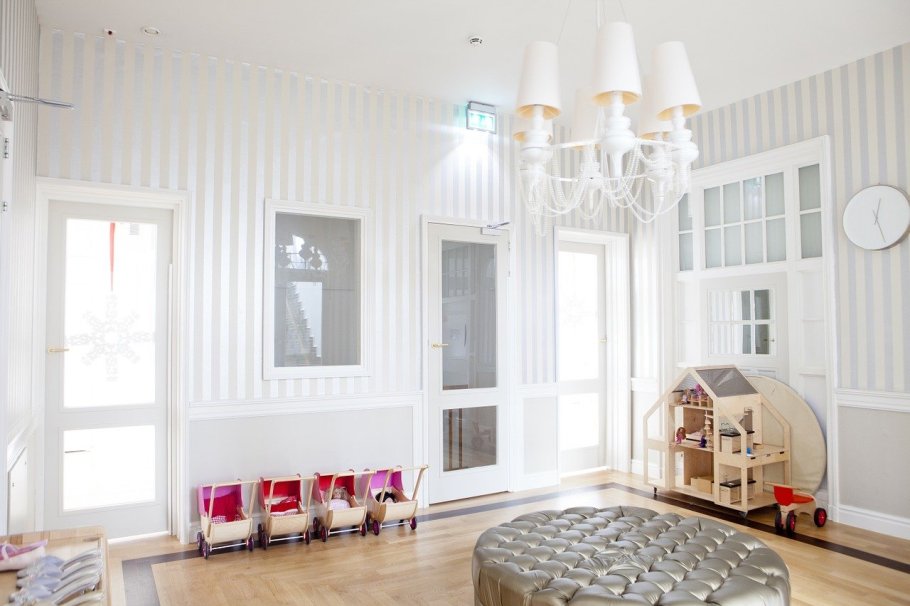Creating a playroom for your child should be an exciting and enjoyable experience; however, all too often, it ends up becoming stressful and expensive, with the end result being far from your initial vision. Why is this type of room so much harder to plan than every other room in your home? The answer is two-fold.
Firstly, your child, or children, most likely have a lot of belongings, namely toys. Far more toys than they will ever need, but somehow, they just seem to accumulate more and more with each passing month. How are you possibly supposed to find enough space and create sufficient storage to keep all these toys from overflowing?
The second problem is that you simply want the best for your child. You may be willing to compromise with other rooms in your home, but in regard to your child’s playroom, only perfection will do. You want it to be fun, engaging, educational and clutter-free, so it’s no wonder you are struggling. Not to mention, you will want to create a playroom that will be the envy of all your mum friends – you know that plays a part, too!

However, it can be done, and here is how you can do it.
- Go Bold and Colourful
Even if you have favoured a more neutral décor for the rest of your home, a child’s playroom should be the one room where you just let go and embrace colour. Young children learn about the world around them with their senses; touch, sight, smell, sound and taste. Therefore, you should try to incorporate as many of these senses into their play space. Opt for bold primary colours on the walls and utilise different textures with the furnishings, such as soft and fluffy rugs, or bobbles and sequins on cushions. Make every aspect of the room’s décor an opportunity for your child to explore.
Another great way to get children learning some basic skills, like recognising letters and their name, is by placing wall sticker art in their playroom; you can display their name, their favourite nursery rhyme, or even a personal phrase that means something to you and your child. They are guaranteed to love it.
- Create an Imaginative Space
Whether your child enjoys drawing, painting, moulding play dough, or just any messy play activity, it is important for them to have a clear and designated space to do this in. A desk is a good idea for children who love to write and draw, whereas an indoor sandpit, minus the sand, is an effective way to contain a messy play activity. It is important that your child learns about boundaries and understands that this is the area for creative play and learning. This can help to avoid any nasty incidents of pen being drawn on your living room walls.
- Mimic Your Child’s Classroom
You don’t have to mimic a classroom exactly, of course, but most classrooms have separate areas for different educational and fun activities. This could include a reading corner, an interactive play area and a chillout zone. You also want to try and get a good balance of ‘fun’ toys, such as action figures or dolls, and educational toys that actively promote learning.
- Plan Storage Carefully
If you want your child to have a fun and educational experience in their playroom, then adequate storage is key. The easiest way to bore a child is by always having all their toys and games out on display. Too much choice for a small child is never a good idea. Instead, make sure that you have different types of storage solutions, so your child can easily access some toys, while you keep others out of reach; this will make the process of toy rotation a lot simpler. For example, having a dress-up rail on display is fine, as this is a great role-playing activity, and as long as your child knows to hang their dress-up clothes back on the rail after, you should experience no problems.
However, having up to 5 different types of building blocks laid out is not a good idea; not only can this overwhelm your child, but if you have a smaller selection of options instead, they have to use their imagination more, which is better for their overall growth and development.
- Consider the Mess
If you intend to let your child paint, play with water, and have snacks in their playroom, you need to accept the fact that it will get messy. There will be spills, there will be stains and there may even be chipped or broken furniture. Therefore, you do not want to spend a fortune on designer products. If you want your child to truly have fun and learn in their playroom, then you need to be prepared for chaos. Organised chaos, perhaps, but still chaos. This is why second-hand furniture is your friend. Ask your friends or family if they have anything they no longer need, or alternatively, search the local social media selling sites for a bargain or two.
Anna Marikar, mum of four and seasoned blogger, has spent over a decade sharing her parenting journey and passion for kid-friendly crafts and free printables.
Her easy-to-follow craft ideas and practical parenting advice have transformed In The Playroom into a cherished resource for parents.
